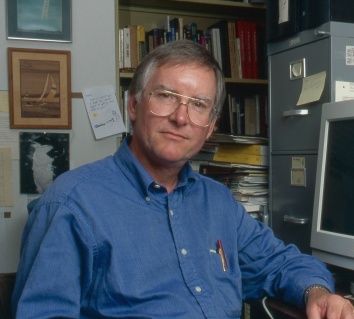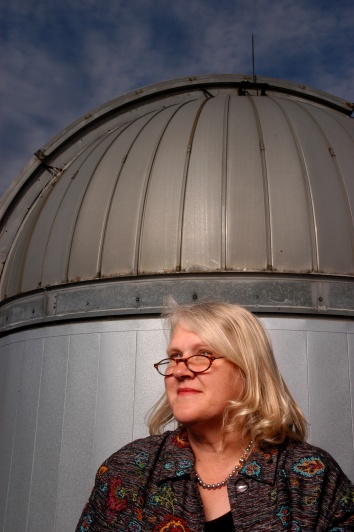Texas Astronomers Achieve Major Improvement in Cosmic Distance Scale with Hubble Telescope
5 April 2007
AUSTIN, Texas — An international team of astronomers led by Fritz Benedict and Barbara McArthur of The University of Texas at Austin has used Hubble Space Telescope to solve one of biggest problems in measuring the universe’s expansion. The results of their in-depth studies of Cepheid variable stars with HST is published in the April issue of the Astronomical Journal.
“We took a classic approach to measuring cosmic distances, made significant improvements, and carried out a successful test,” Benedict said. “The result is a new, improved distance measuring tool.”
The universe’s rate of expansion, “the Hubble constant,” has been hotly debated for decades. To calculate it, astronomers must be able to measure precise distances to galaxies billions of light-years away. That capacity, in turn, is built on a series of measurement techniques in the so-called “cosmic distance ladder” — each of which allow astronomers to measure distances a little farther out into the universe.
One rung in the distance ladder is called a “Cepheid variable star.” Nearly 100 years ago, astronomers noticed that the light output from intrinsically brighter Cepheids varied more slowly than that from intrinsically fainter Cepheids. But that “period-luminosity relationship” was not known exactly. Benedict’s team set out to precisely determine this relationship for Cepheids in our own galaxy.
To accomplish the calibration, they directly measured the distance to 10 Milky Way Cepheids. They followed these stars for two years, measuring their apparent motion on the sky, called “parallax.”
“When we measure a parallax, we’re looking at the little circle that the star makes on the sky because the Earth goes around the Sun,” Benedict said. “ The size of that circle gives the absolute distance to the star.” That circle is so small for these distant stars ( equivalent to a quarter seen from 1,500 miles away) that it takes the Fine Guidance Sensors on HST to make the measurements.
Once a star’s precise distance is known from parallax, its intrinsic brightness can be established. “We established the intrinsic brightnesses of Cepheids whose light varied by different amounts, and came up with an accurate period-luminosity relationship,” said Tom Barnes of The University of Texas, the team’s resident Cepheid expert. “Knowing the period with which the brightness of a Cepheid varies now accurately indicates its intrinsic brightness.”
According to Benedict, “With this calibration, astronomers can deduce the distance to any galaxy in which a Cepheid can be detected.”
McArthur added, “We tested our newly derived Cepheid period-luminosity relations on other galaxies with Cepheids and found our results to be consistent with distances derived from other methods.” (This includes the galaxy NGC 4258, whose absolute distance has been measured by tracking the motion of water masers around its center.)
Applying this relationship to many and more distant galaxies should improve the accuracy of the Hubble constant. “A precise Hubble constant is the top rung in the distance scale ladder. With it you know the distance of any galaxy with a measured velocity,” McArthur said.
Measuring parallaxes sounds simple, but “success is in the details,” Benedict said. McArthur explains that “not only do we take into account the motions of stars near our target Cepheids, but we also look at how the minute motions of the telescope itself can effect our measurements.” She puts these many corrections into the model when she derives the parallaxes. “The journal paper includes the fine print,” she said, “so that our methods will be clear to our colleagues who appreciate the fine art of precise position measurement, or ‘astrometry.’”
The HST Astrometry Team was founded at The University of Texas at Austin long before the telescope launched in 1990, and helped design HST’s Fine Guidance Sensors and ensure they would be useful for this kind of study. “We’ve been cranking on this since 1977,” Benedict said. “and as we tell our children, ‘Practice makes perfect!’ ”
“This result has excited me more than any in my 35-year career,” Benedict said, “and we will have more and better over the next five years.”
In addition to Benedict, McArthur, and Barnes, the international team for this research consisted of Michael E. Feast of The University of Cape Town, Thomas E. Harrison of New Mexico State University, Richard J. Patterson of The University of Virginia, John W. Menzies of the South African Astronomical Observatory, Jacob Bean of The University of Texas at Austin, and Wendy L. Freedman of the Observatories of the Carnegie Institution of Washington.
— END —







